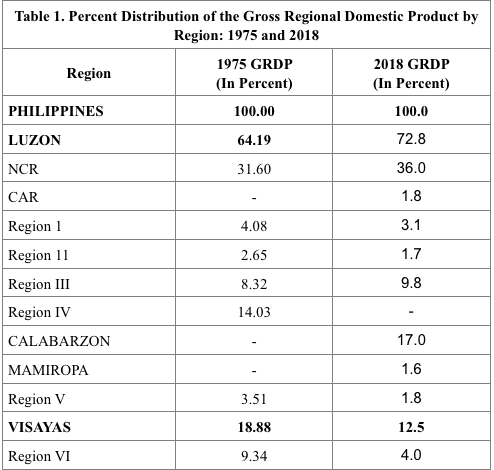Regional planning and development (Part 2)

Put into law in September 24, 1972 through Presidential Decree (PD) No. 1, the Integrated Reorganization Plan (IRP) of the Executive Branch of the Government brought many changes in the conduct of governance in the country. Among these was the division of the country into regions not only for administrative purposes but also for the preparation and implementation of plans that are required to be prepared for each region.
For this purpose, the IRP mandates that in each of the regions (now 17 in all including Metro Manila) a Regional Development Council (RDC) would be establish to serve as its planning and coordinating body for their development.
Recognizing the imbalance in development in the country in favor of Metro Manila, the IRP gave the following mandates to the RDC:
- Conduct a comprehensive and detailed survey of the resources and potentialities of the region and, on the basis thereof, prepare long-range and annual plans for the socioeconomic development of the region within the guidelines set by the National Economic Development Authority;
- Translate the national economic goals into more specific regional objectives which shall be reflected in the plans and programs of action prepared for the region;
- Develop a research program involving continuing studies on the social, economic and cultural development of the region;
- Consider and adopt an annual regional economic report for transmittal to National Economic Development authority;
- Extend planning and other related forms of technical assistance to the local governments, local planning boards, and sectoral departments of the national government existing in the region, and private entities;
- Coordinate all planning activities of sectoral departments of the national government existing in the regions in relation to those of the local governments and local planning boards;
- Make the necessary changes, amendments, and revisions in the regional plans to improve and update them; and
- Perform such other functions as may be provided by law.
More than forty years had already elapsed since the institution of regional planning in the country in the 1970s through PD No. 1. What is the situation in the country now? Has regional development become more equitable now than before?
To answer this question we look at the percent distribution of output or Gross Domestic Product by region (GRDP) in 1975 and compare it with the same figures in 2018.
Here we find that in 1975 the National Capital Region (NCR) accounted for the largest share in output with 31.6 percent, followed by Region IV with 14.03 percent and Central Luzon with 8.32 percent. Overall, Luzon had 64.19 percent (See Table 1 below).
Visayas and Luzon had 18.9 percent and 16.93 percent each, respectively.
In 2018, the share of the NCR went up by 4.4 percentage points to 36.0 percent with the share of the whole of Luzon also going up by 8.6 percentage points to 72.8 percent.
In the same year, the share of the Visayas went down by 6.38 percentage points to 12.5 percent while Mindanao’s share also decreased by 2.43 percentage points to 14.5 percent.
We can see, therefore, that instead of being decreased, the NCR’s dominance in the country continued to increase at the expense of the rest of the country, except for Calabarzon and Central Luzon adjacent to it. Thanks to the spillover-effects of the development of the NCR located between them.
This goes to show that the work of the RDCs in developing their respective regions had not been effective enough to counter the rapid growth of the national capital region. This happens despite the fact that in less than 20 years after the implementation of the IRP, the new local government code was also passed, which provides ample funds to the local government units to carry out their expanded mandates to manage and develop their respective localities as intended in the code.
The main problem with respect to the operation of the RDCs was the fact that while they are mandated to prepare their respective regional development plans, nothing was done to provide funds to the RDCs to implement their plans.
In the absence of funds, the RDCs are only required to submit to Manila their priority programs and projects for evaluation, funding, and their implementation by the concerned national government agencies, which also have their own priorities identified at the national level. Not many projects are submitted to Manila every year and not all of those submitted are approved.
In practice though, the RDCs are asked by the national government agencies to endorse the proposed annual budget of their respective regional agencies, which the RDCs dutifully do every budgeting period.
Unlike the RDCs, the local government units are given the necessary funds annually by the national government to carry out their expanded mandates under the new local government code. It remains to see, however, how effective they are in carrying out their tasks to develop their respective areas given that much of the countryside still remain underdeveloped.

Disclaimer: The comments uploaded on this site do not necessarily represent or reflect the views of management and owner of Cebudailynews. We reserve the right to exclude comments that we deem to be inconsistent with our editorial standards.

